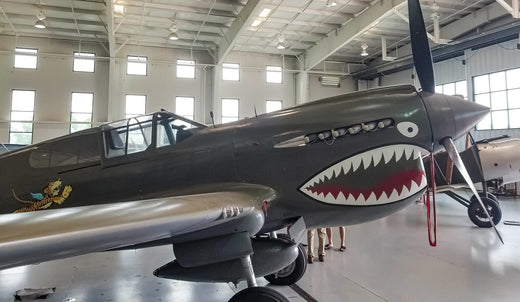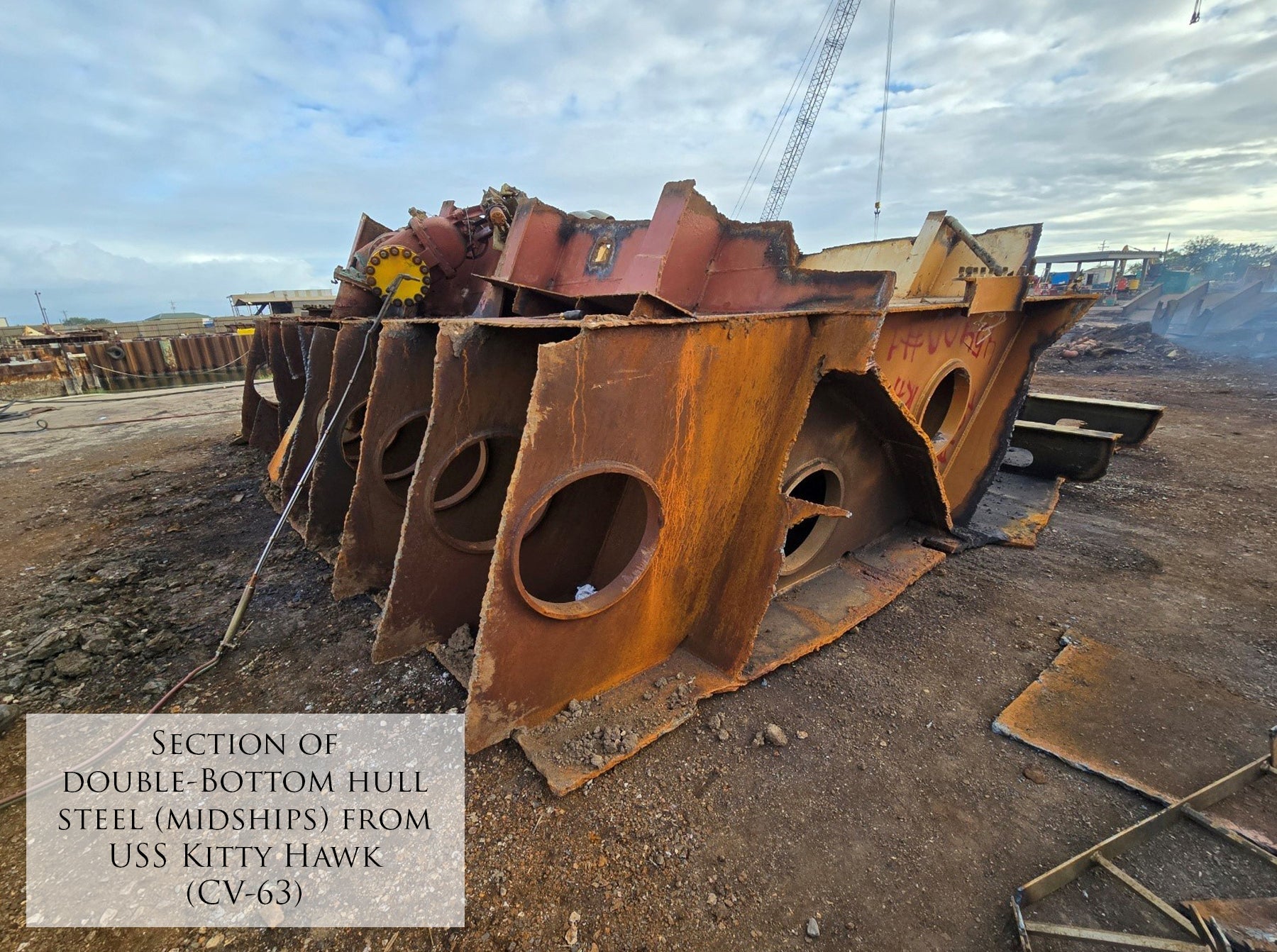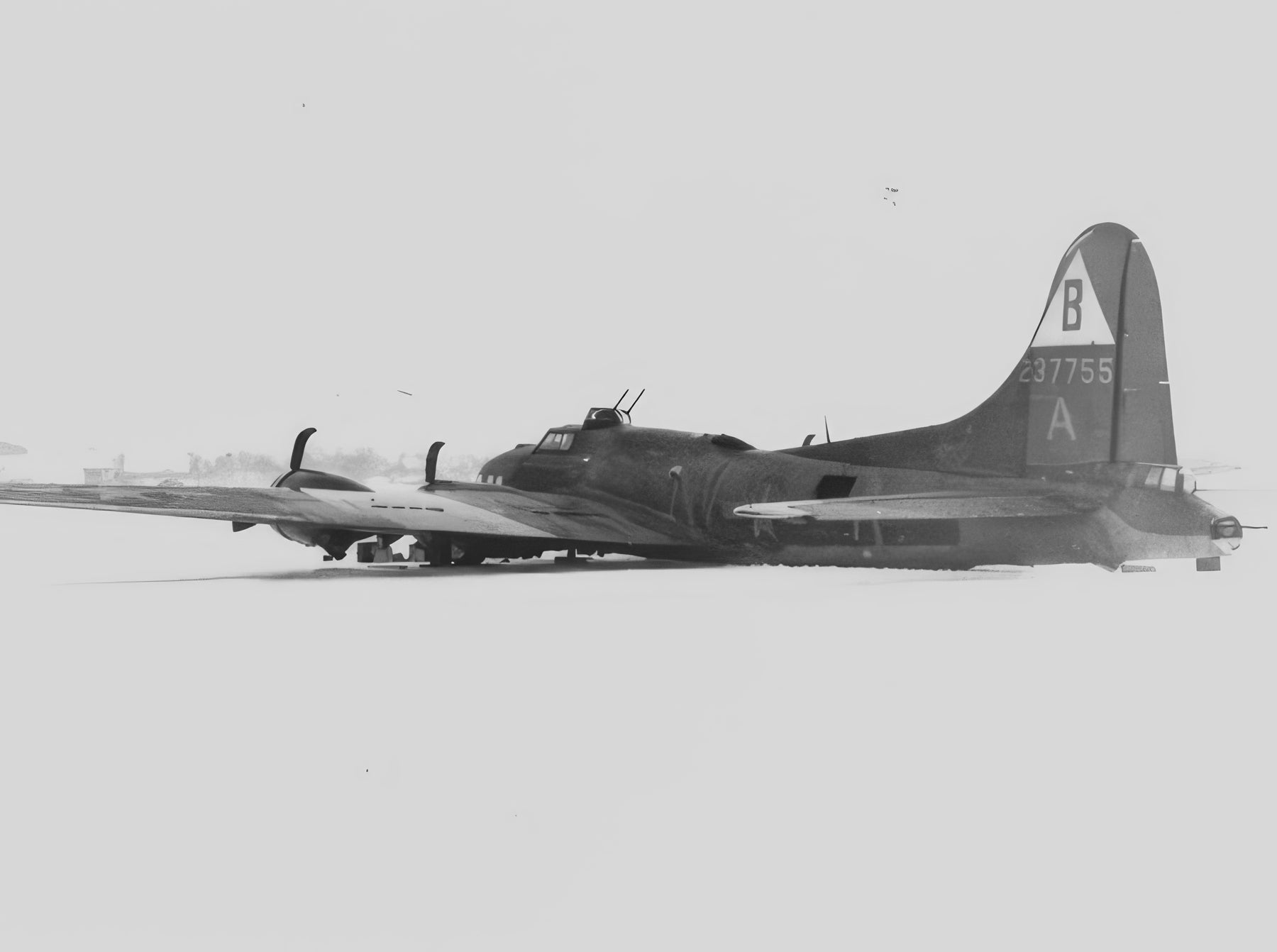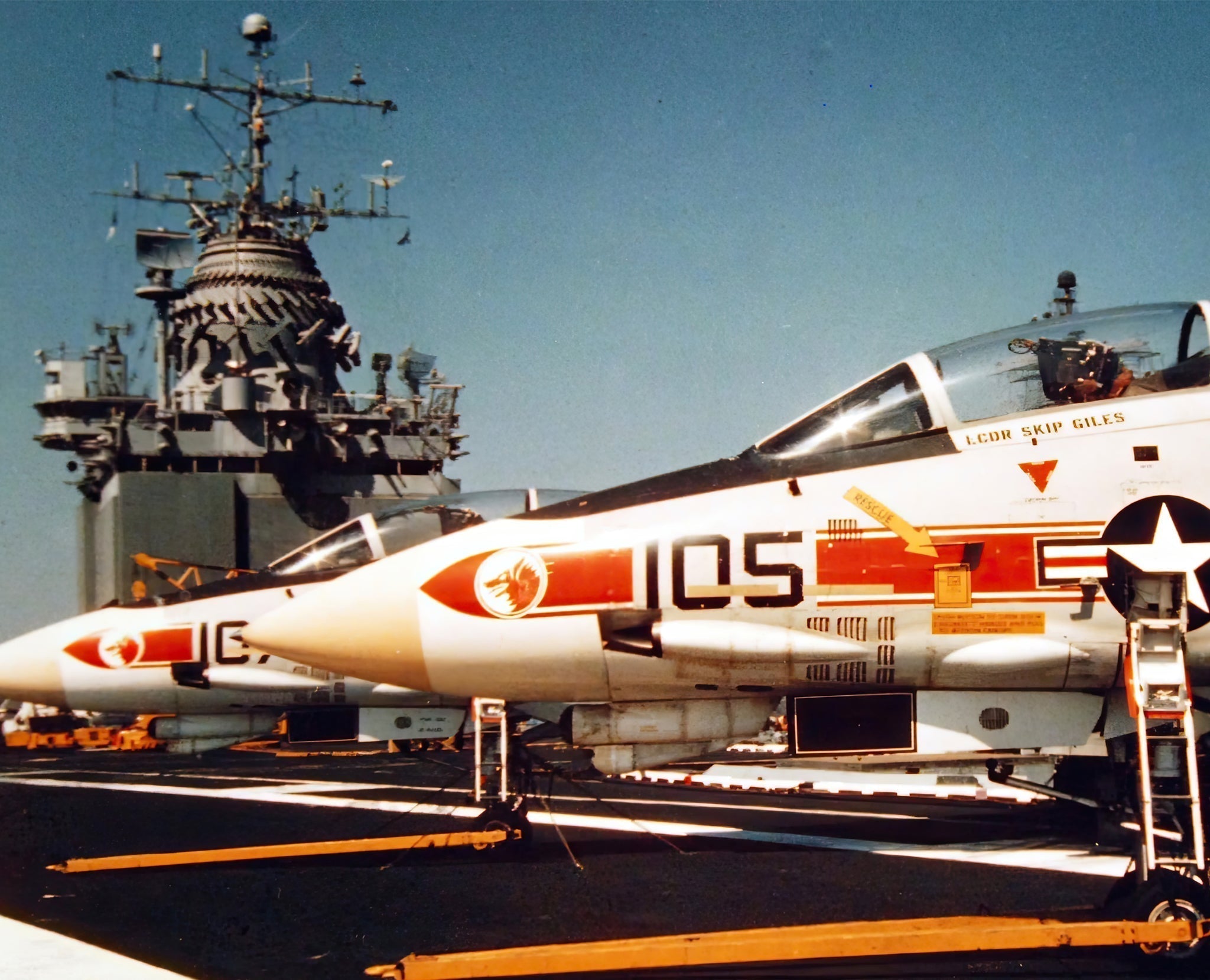This Fine Art Print by Artist Craig Tinder depicts the heroism and determination of AVG Ace "Tex Hill" of the Flying Tigers on a mission in July 1942.
Details About the RELIC:
This fine art print was commissioned by the Military Aviation Museum in Virginia Beach, VA, and features relic material from their restored P-40E Warhawk. Originally transferred to the British as a Kittyhawk 1a under serial number 41-35918, this aircraft was later supplied to Russia's 19th Guards Regiment under the Lend-Lease program during World War II. Serving on the Eastern Front, the P-40 saw action as part of the Soviet effort to defend against the advancing German forces.
 Aluminum skin from P-40E Warhawk 41-35918 that is the relic included in the "Return From Canton" limited edition prints
Aluminum skin from P-40E Warhawk 41-35918 that is the relic included in the "Return From Canton" limited edition prints
After decades of being lost to history, the aircraft was recovered in 1992, having been preserved in the Russian tundra. The restoration of this aircraft brought it back to flying condition, where it now bears the markings of American Volunteer Group (AVG) Ace David Lee "Tex" Hill’s P-40E Warhawk, serial number 41-5658, designated as “108.” Tex Hill was one of the Flying Tigers, the renowned group of volunteer pilots who fought for China against Japan before the U.S. officially entered the war. His P-40, with its signature shark-mouth nose art, became an iconic symbol of air power and bravery during the conflict in the Pacific.
 Artist, Craig Tinder, holding panels of the P-40 Warhawk along with the "Return From Canton" limited edition art prints
Artist, Craig Tinder, holding panels of the P-40 Warhawk along with the "Return From Canton" limited edition art prints
The Story Behind the Print:
In the early morning of July 6th, 1942, Major David Lee "Tex" Hill, an experienced fighter pilot with the Flying Tigers, took off from Kweilin, leading a flight of four P-40E Warhawks. Their mission was to escort five B-25 Mitchell bombers on their way to bomb an oil refinery at Canton. The flight encountered low overcast clouds, but fortunately, the clouds cleared up over Canton, and the bombers were able to hit their target. However, on their way back, one of the B-25 pilots reported being attacked by Japanese Ki-27 fighters. Hill, who was vigilant and always prepared for any eventuality, quickly led his flight in a counter-attack on the enemy aircraft. They managed to shoot down two confirmed Japanese fighters and the mission was deemed a success.
 P-40E Warhawk 41-35918 in the Military Aviation Museum - Virginia Beach, VA
P-40E Warhawk 41-35918 in the Military Aviation Museum - Virginia Beach, VA
On the return journey, the situation grew more perilous. One of the B-25 pilots reported that they were being pursued by Japanese Ki-27 fighters. Major Hill, known for his sharp instincts and combat experience, wasted no time in responding. He quickly directed his flight into a counter-attack, engaging the Japanese fighters in a fierce dogfight. Despite the intensity of the encounter, Hill's leadership and the skill of his fellow pilots prevailed. They managed to shoot down two confirmed enemy aircraft, safeguarding the bombers as they made their way back to base.
 Jerry Yagen and Tex Hill overlooking the newly restored P-40
Jerry Yagen and Tex Hill overlooking the newly restored P-40
The mission was not only a tactical success, with the bombers hitting their target, but it also underscored the Flying Tigers' effectiveness as an air unit. Major Hill’s quick thinking and aggressive counter-attack reinforced his reputation as one of the most accomplished fighter pilots of World War II. His leadership and the performance of his P-40E Warhawks helped ensure the safe return of the B-25s and highlighted the vital role the Flying Tigers played in the China-Burma-India theater. This mission, along with others, solidified Tex Hill’s status as a leading ace and key figure in the fight against Japanese forces in the Pacific.
Learn more about Did pilots like the P-40? Click Here
To purchase or see similar items, visit here.
Commissioned by Museums, Treasured by Collectors





Share:
Golden Age of Sail, the story behind "Cutty Sark"
Night Hunter, the story behind "Moonlit Nemesis"